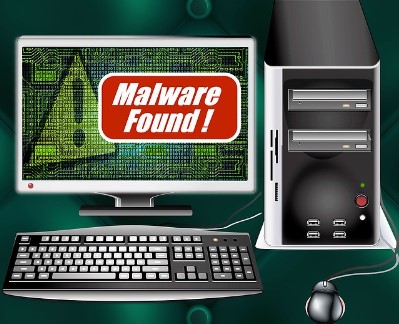
Evan Porter
Updated on: December 20, 2023
There are dozens of different kinds of malware: viruses, Trojans, bots, ransomware, and plenty more. All of them can wreak absolute havoc on your computer if you’re not protected.
One of the most nefarious of the bunch is the class of malware known as computer worms.
Computer worms are special kinds of malware that replicate and spread by themselves without any human interaction, which is exactly what makes them so dangerous.
Here’s our guide to computer worms, how to tell the difference between a worm and a virus, and how to keep your computer and network protected in 2024.

Pixabay
What’s the Difference Between a Worm and a Virus?
The defining aspect of a worm is that it can infect your computer, replicate itself, and go on to infect another computer, all without any input from you or a human attacker.
If it sounds an awful lot like a virus, that’s because the two are similar. But there are a few key distinctions computer users should be aware of.
Purpose
Viruses are usually designed to inflict damage on a target computer. Usually, once activated, a virus will corrupt or destroy data on your machine.
Worms, often, have only one purposes: replicate and spread. Their primary intent is not usually to manipulate data, software, or systems on your computer.
However, through large-scale replication, worms can seriously disrupt computer performance and cause damage to an entire network of machines.
Execution
Viruses need human input to become active. You may download a virus, for example, thinking it’s a harmless email attachment. Then, when you open it, the malware launches.
Or you may unknowingly install and open a virus when you download and use a piece of free software from a suspicious source.
Worms don’t need any input. Once a worm has made its way into your machine, it will begin making copies of itself and spreading to even more machines using a variety of techniques.
This can all happen without you even knowing about it.
Spread
Again, viruses usually require some human interaction in order to take hold. The most common way that viruses typically spread is through a user being tricked into download and executing it.
This can happen through:
- Clicking on malicious ads
- Downloading harmful email attachments
- Installing freeware
- Participating in P2P sharing
Worms don’t need any help from you or anyone else — typically they scour your network connection for vulnerabilities or exploits in order to make their way to new machines.
However, worm variations like IM worms and email worms can force the target machine to send messages containing the worm to users in a stored contact list; blurring the line between worm and virus even more.
(If you’ve ever had your friends tell you they received a suspicious message from you that you don’t remember sending, chances are it was a worm.)
Virus / worm hybrids are also common, where the malware can spread without any human contact like a worm, but delivers a virus-like payload to inflict damage on every machine it interacts with.
Signs Your Computer Might Have a Worm
It can be difficult to detect the presence of a worm on your computer.
Unlike viruses, worms very often pass (relatively) harmlessly through your machine, quietly replicating themselves in the background.
Though they can, they usually don’t hijack your files, serve obnoxious pop-up ads, or destroy your data.
The two biggest signs your computer might have a worm are:
Performance or Speed Problems
Rapid replication and spread of a worm through your network can drain your computer’s resources in a hurry.
If you find your computer is moving slow, or your network seems to have slowed to a crawl, it’s worth investigating. There could be a malicious worm hogging network bandwidth and processing power in the background.
Unusual Computer Behavior
The general rule of thumb is to pay attention to anything weird, for lack of a better word!
If, while using your computer, you see:
- Unusual error messages
- Strange icons
- Unexplained changes in appearance or layout
- Or anything else that raises your alarms
Then you should investigate. These could be signs that a worm or other malware has infected your system.
If you start to suspect your computer might be infected, you should take action in a hurry.
How to Protect Your Device from Worms in 2024
If your computer becomes infected with a worm, it’s likely not because of anything you did or didn’t do!
Remember, worms can replicate and spread through all kinds of devious methods without any input from you.
(So it’s probably not because you clicked on a shady ad or downloaded it accidentally.)
That said, there are a few things you can do regularly to help keep your computer, and your entire network, safe from worms:
Update All Systems and Software Regularly
Worms thrive on vulnerabilities that remain unpatched.
Their primary method of spreading from machine to machine is through security loopholes in the software or systems your computer is running.
The good news is that, once known, these exploits are often patched quickly. But you have to be sure to install the updated software as soon as you’re able to stay protected.
Next time your computer bugs you to update your software or operating system, don’t procrastinate!
Practice Safe Internet Behavior
Though it’s not their preferred method of travel, certain kinds of worms (and worm/virus hybrids) can be spread through malicious downloads or email attachments.
When browsing the web or using your computer, be sure to:
- Never download attachments unless you know exactly what they are and who they’re from
- Avoid free software from untrusted marketplaces
- Be extremely cautious using P2P file sharing
- Don’t click on ads, especially ones from brands and websites you aren’t familiar with
These tips won’t stop bugs from sneaking in the backdoor of your operating system, but you can at least avoid inviting them in through the front door.
Install a Powerful Antivirus and Run Regular Scans
Worms can be a nightmare to remove once they take hold of your computer, and worse, they can sneak in without you even knowing.
But with a strong antivirus on your side, you improve your chances against them dramatically.
Choose a reputable antivirus from our hand-tested list and make sure to keep it regularly updated, as new virus and worm definitions are constantly being added to antivirus libraries.
Keep Worms Out with a Strong Defense Plan
Worms can be incredibly intimidating; they can duplicate themselves to exhaust your computer and network resources. Worse yet, hybrid versions can cause severe damage to your data, leading to catastrophic losses.
Remember to keep all of your software and operating systems up to date. Install security patches as soon as possible!
And choose a powerful antivirus to be your first and last line of defense. The best ones will be able to keep worms out of your machine, and they’ll also be your best tool for removing them if you’re already infected.





